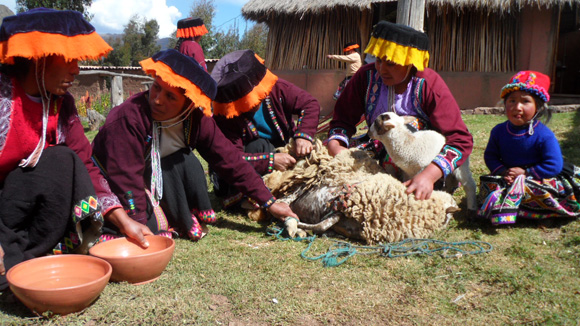From choosing what company to book with and what gear to pack, preparing for the Inca Trail can be daunting. The 4-day hike to Machu Picchu, one of the newly named Seven Wonders of the World, appears on so many bucket lists, from expert hikers to first-time explorers. If it is your first time, or you haven’t been in ages, here are some quick tips to help you prepare for the journey of a lifetime.
1. You get what you pay for.
Unfortunately, the days where you could hike the Inca Trail independently are long over. You must go with a tour company, so do your research beforehand on the company’s reputation and sustainability policies.
This site is updated with sustainable companies that aim to improve Peru’s economy, treat porters fairly, and have adequate equipment. You might notice the list doesn’t include the cheapest tours offered; often the lowest price companies cut corners on food and equipment, and even exploit porters. I doubt anyone wants rice for four days solid, a tent with a hole in it, and a porter who is being mistreated.
Always check your contract to see what you’ve been promised. Bear in mind that you may also need to book months in advance, depending on what time of year you go. High season is June to August.
2. You will have to carry your gear for the entire trek.
Some of us love to pack more than others. But before you pack multiple outfits for each day, remember that you will be carrying those items up the trail or paying extra fees for the porters to assist you. Normally the tour company arranges to have a porter carry your tent; however for an additional $75 a porter will take another 20lbs from you.
Now before you go up the trail with nothing but a water bottle, remember to pack enough to survive on the trail. These are the essentials:
- snacks for energy
- sunscreen and a hat to protect you from strong sunshine
- rain gear for that unavoidable rainstorm (see below)
- a warm sleeping bag and clothing layers for the cold nights
- shorts for the hot days
- sensible hiking boots that are already broken in for the long hiking days.
Before you depart on your trip, it’s wise to consult the tour company for a more thorough packing list.
3. It’s not a walk in the park.
Being a classic bucket list destination, many people seem to overlook the physical requirements of the trail. It’s not a technically difficult trail, however it is located in high altitude, which makes everything more challenging.
Get acclimatized for the trail before you start. Arrive in Cusco, the main city near the start of the trek, at least two days before you’re scheduled to begin the trail. At 3,500 meters (11,480 feet) above sea level, the elevation in Cusco will help get your body used to the 420-meter (13,780-foot) pass you’ll be hiking on day two.
In the city, most restaurants and hotels offer coca tea, a herbal tea that acts as a mild stimulant which helps with the headaches of high altitude. Prior to the trek, your guide will likely make a stop to purchase coca leaves. Locals believe that rolling the raw leaves into a ball and chewing on the plant is key in surviving the high altitude trek, however, there is no evidence to support it as normally only half of a tour group will indulge.
Once on the trail, the granite path climbs over high-altitude peaks and descends over ancient staircases, all wreaking havoc on your knees. In addition, most trekkers carry an extra 20-30 pounds of gear.
Get in shape pre-trek by hiking up a steep hill (or up and down multiple staircases) with a 10lb bag on your bag for at least an hour a day. Do this for a month solid and you’ll be physically prepared for the trek.
4. There will be rain.
The third day of the trail takes hikers into a cloud forest, a subtropical ecosystem where clouds, mist, and rain constantly roll over the Andes Mountains throughout the day. As you walk into the lush and tropical Amazon, remember: you are in a rainforest.
It will rain at some point, so bring a rain jacket and weatherproof your bag.
5. It really will be the trip of a lifetime.
There is a reason the Inca Trail is on so many bucket lists. Every single turn of the trail takes hikers to a place of extraordinary beauty, from alpine meadows to the lush Amazon rainforest. Every step changes the setting. By the time you finally find yourself at Machu Picchu, it’s likely you’ll have found the trek turned into something life altering.
Enjoy, and make sure to bring a camera!



























